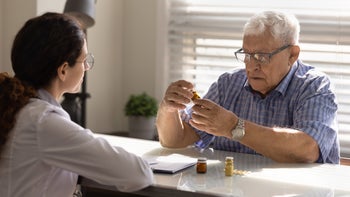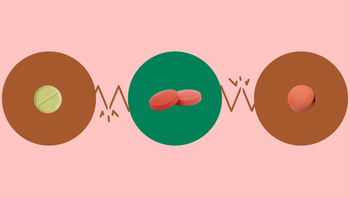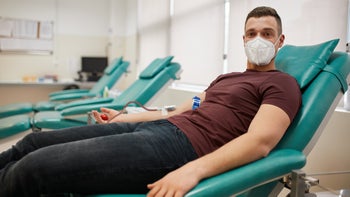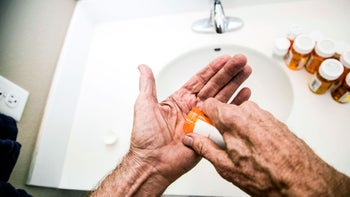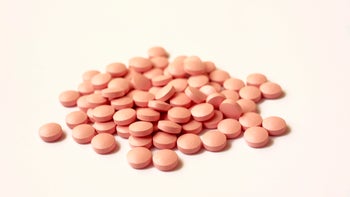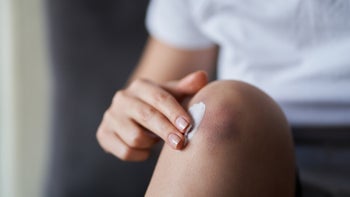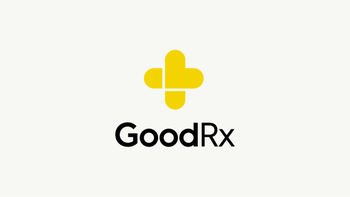
Xarelto Dosages for Kids and Adults: Your GoodRx Guide
Key takeaways:
Xarelto (rivaroxaban) is a blood thinner that treats and prevents blood clots. It’s approved for both kids and adults.
A typical Xarelto dosage in adults is 10 mg to 20 mg by mouth once daily. But your dosage will depend on why you’re taking it and how long you need it. Dosages for children are based on body weight.
There are many ways to save on Xarelto. If you’re eligible, a manufacturer savings card can help you get Xarelto for as little as $10 per fill. A patient assistance program is also available.
Access savings on related medications
Table of contents

Xarelto (rivaroxaban) is a direct oral anticoagulant (“blood thinner”) medication. An increasingly popular way to treat and prevent blood clots, Xarelto is prescribed to manage various heart-related health conditions.
Convenience is the name of the game with Xarelto. An advantage of Xarelto compared to other common anticoagulants is that you can take it once daily. And unlike warfarin, it doesn’t require regular blood testing to see if it’s working. Certain foods in your diet shouldn’t affect it either.
However, Xarelto dosages can be complicated. They vary based on what you’re taking it for and how long you need it. In this guide, we’ll cover typical Xarelto dosages in adults and children.
What’s the typical Xarelto dosage for adults?
Xarelto comes as 2.5 mg, 10 mg, 15 mg, and 20 mg tablets. A typical Xarelto dosage for adults is 10 mg or 20 mg by mouth once daily, but specific doses vary by health condition. Uses aside, doses higher than 10 mg should generally be taken with food.
If you have difficulty swallowing pills, you can crush Xarelto tablets and mix them with applesauce before taking them. Xarelto tablets may also be crushed and mixed in 50 mL of water if you or a loved one have a nasogastric (NG) tube.
Atrial fibrillation
Atrial fibrillation is a heart condition where the heart beats irregularly. When blood is not moved regularly through the heart, it sometimes forms a dangerous blood clot that can reach the brain and cause a stroke. Xarelto helps prevent strokes in people with atrial fibrillation.
The typical Xarelto dosage for adults with atrial fibrillation is 20 mg by mouth once daily. It’s best practice to take it with your evening meal.
Coronary artery disease and peripheral artery disease
Coronary artery disease (CAD) and peripheral artery disease (PAD) are two heart conditions that stem from narrowed or blocked blood vessels. Both conditions can raise your risk of developing a blood clot and lead to more serious events, like a heart attack or stroke.
The Xarelto dose for CAD or PAD is 2.5 mg by mouth twice daily. It can be taken with or without food, and it’s often taken in combination with low-dose aspirin (81 mg).
Treatment of blood clots
Blood clots that develop in the veins in your lower leg or thigh are referred to as a deep vein thrombosis (DVT). When these clots travel to your lungs, they can lead to a serious condition called pulmonary embolism (PE). Xarelto is approved to treat DVT and PE.
The recommended Xarelto dosage for the treatment of DVT or PE is 15 mg by mouth twice daily for 21 days (3 weeks). After this, the dose drops to 20 mg once daily. Both doses should be taken with food.
Some people who take Xarelto for this reason may be able to stop taking it after 3 months, while others may need to take it for longer.
Prevention of blood clots
Xarelto is also approved to prevent DVTs and PEs in the first place. This is helpful for people who are at a higher risk of developing a DVT or PE. Prevention doses can be taken with or without food.
Use | Xarelto dosage |
Lowering the risk of having another DVT/PE | 10 mg once daily (started 6 months after your DVT/PE was initially treated) |
DVT prevention after hip or knee replacement surgery | 10 mg once daily for 35 days for hip replacement surgery 10 mg once daily for 12 days for knee replacement surgery |
People at high risk for a blood clot who are in the hospital or were recently discharged | 10 mg once daily for up to 39 days |
What’s the typical Xarelto dosage for children?
Your healthcare provider will calculate your child’s Xarelto dosage based on how much they weigh and what they're taking it for.
If your child weighs less than 50 kg (110 lbs), they’ll likely take Xarelto as a 1 mg/mL oral suspension. They can swallow the liquid or receive it through a NG tube. Kids with larger body weights generally receive the tablets.
Treatment and prevention of blood clots
Xarelto is approved to treat and prevent recurrent blood clots in infants, children, and adolescents. Usually, the blood clot is first treated in the hospital with at least 5 days of intravenous (into the vein) anticoagulation treatment.
A healthcare provider will determine the dose based on your child’s body weight in kilograms. Depending on the dose, it may be given 1 to 3 times a day. All doses should be given with food.
Prevention of blood clots after Fontan procedure
Children with congenital heart disease may need to undergo a type of open-heart surgery called a Fontan procedure. Xarelto is approved for children at least 2 years old who need blood clot prevention after undergoing this procedure.
Dosing is based on your child’s body weight in kilograms, but it’s typically given once or twice daily. Doses can be given with or without food.
Are there any dosage adjustments for medical conditions?
Yes. People who have kidney or liver problems may need a lower Xarelto dosage. In more severe cases, you may need to avoid it altogether.
Xarelto should also be avoided if you have antiphospholipid syndrome, a prosthetic heart valve, or are at high risk for bleeding.
You should let your healthcare provider know if you’re planning to undergo any type of surgery, including spinal or dental procedures. In some cases, they may recommend that you temporarily stop taking Xarelto before your procedure to help lower your risk of serious bleeding. Don’t stop Xarelto on your own without consulting with a healthcare provider.
Dosage for people with kidney problems
If you have kidney problems, you’ll likely need a lower dose of Xarelto. This is because your kidneys help get rid of Xarelto from your body. Your kidneys may not be able to filter out Xarelto as effectively if you have kidney problems. This can raise your risk of Xarelto side effects, like serious bleeding.
Different health conditions have different dose reductions based on kidney health. For example, if you have atrial fibrillation and kidney problems, you may need to lower your dose to 15 mg once daily (instead of 20 mg once daily).
Dosage for people with liver problems
There are no Xarelto dose adjustments necessary for people with mild liver problems. But, if you have moderate to severe liver problems, you may be at increased risk for bleeding. In these cases, your provider may recommend avoiding taking Xarelto altogether.
What happens if you miss a dose of Xarelto?
If you miss a dose of Xarelto and you take it once a day, you should take your missed dose as soon as possible. But if it's too late to take your dose on the same day, skip it and resume your normal dosing schedule the next day. Don’t take an extra dose to make up for a missed one.
However, if you or your child miss a dose and take Xarelto multiple times daily, it’s a good idea to speak with your pharmacist or healthcare provider for personalized advice. They can help you decide the safest way to resume your doses.
What should you do if you take too much Xarelto?
If you take too much Xarelto, you may experience additional side effects. This can become dangerous. Signs and symptoms of serious bleeding to look out for include:
Abnormal bleeding or bruising
Bleeding that takes a long time to stop
Blood in the urine
Blood in the stool
Vomiting blood
Coughing blood
Severe headaches or dizziness
If you think you took too much Xarelto or are experiencing possible symptoms of bleeding, contact your healthcare provider right away as a precaution. You can also contact Poison Control at 1-800-222-1222.
However, if you’re experiencing severe side effects or uncontrollable bleeding, you should seek medical attention right away. An antidote called Andexxa (andexanet alfa) is available to help reverse the effects of Xarelto.
How to save on Xarelto
There are ways to save on Xarelto, which is only available as a brand-name medication. GoodRx can help you navigate between patient assistance programs and copay savings cards to save money on your prescription.
Save with patient assistance programs. If you’re uninsured or underinsured, you may be eligible for Xarelto’s patient assistance program, which offers the medication free of cost.
Save with a copay savings card. If you have commercial insurance, you may be eligible to pay as little as $10 for Xarelto using a savings card from the manufacturer.
The bottom line
Most adults take one Xarelto tablet (10 mg or 20 mg) by mouth once daily for months to years at a time. Xarelto doses in kids are based on body weight. Xarelto dosages can also vary depending on what you’re taking it for, your kidney health, and other health conditions that you may have. Speak with your healthcare provider about the most appropriate Xarelto dose for you or your child.
Why trust our experts?



References
Janssen Pharmaceuticals, Inc. (2023). Xarelto [package insert].
Lee, M., et al. (2022). Fontan completion. StatPearls.
MedlinePlus. (2022). Antiphospholipid syndrome.
MedlinePlus. (2022). Rivaroxaban.
Sikorska, J., et al. (2017). Direct oral anticoagulants: A quick guide. European Cardiology Review.
Vimalesvaran, K., et al. (2018) Role of rivaroxaban in the management of atrial fibrillation: insights from clinical practice. Vascular Health and Risk Management.
Was this page helpful?
Related Articles
Browse medications
View AllResearch prescriptions and over-the-counter medications from A to Z, compare drug prices, and start saving.





